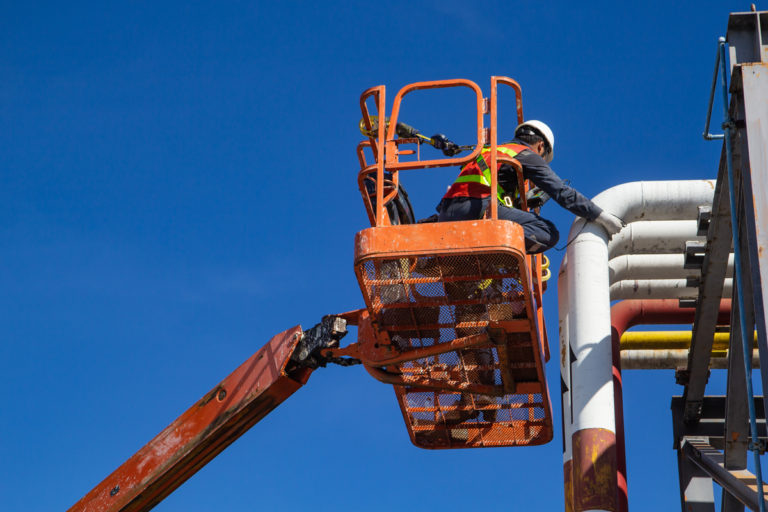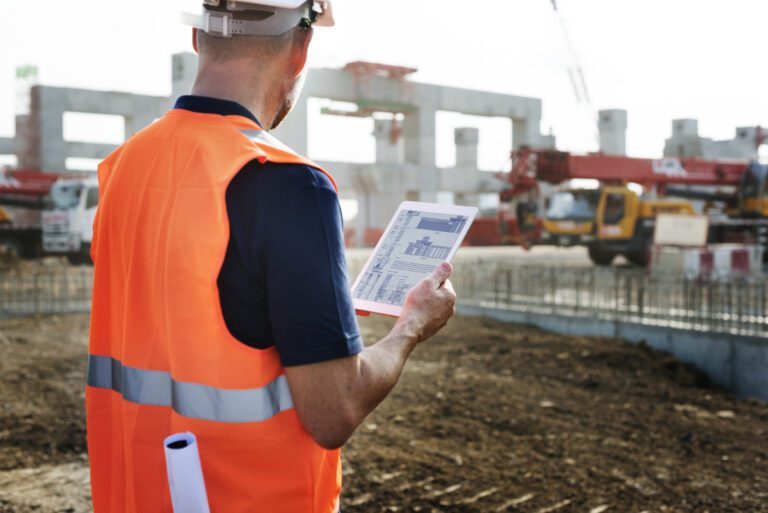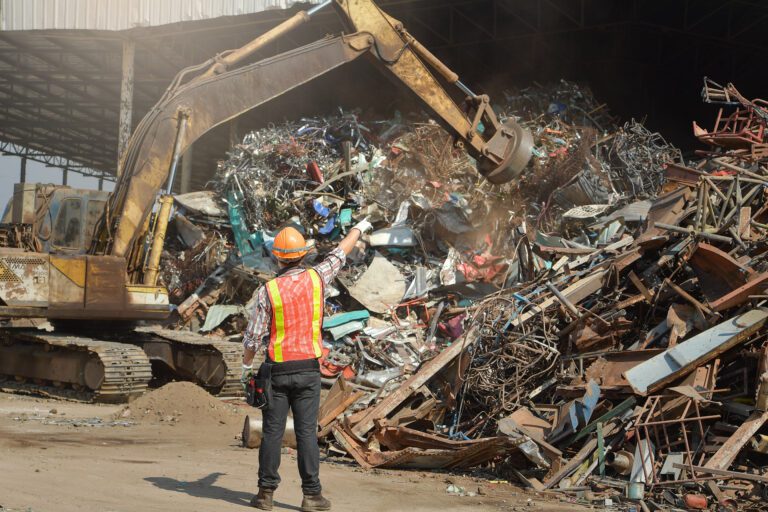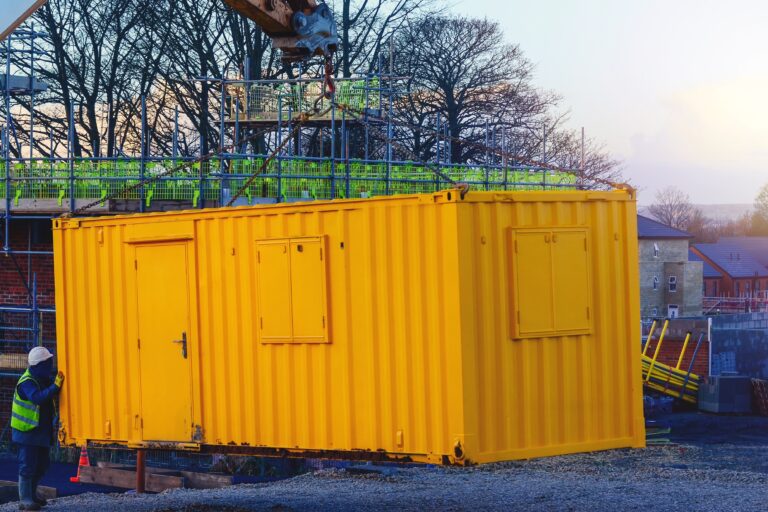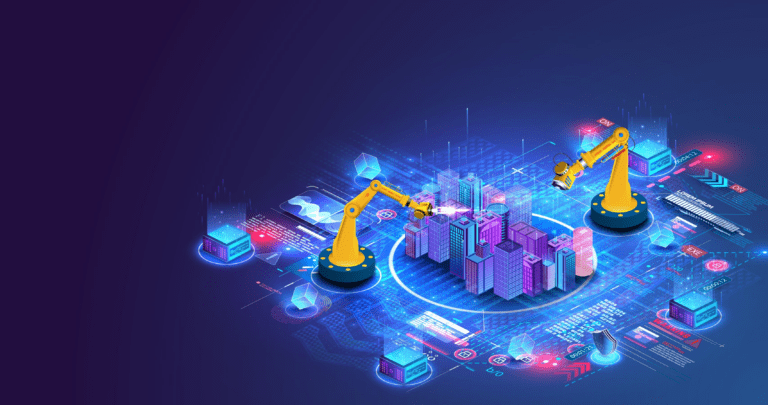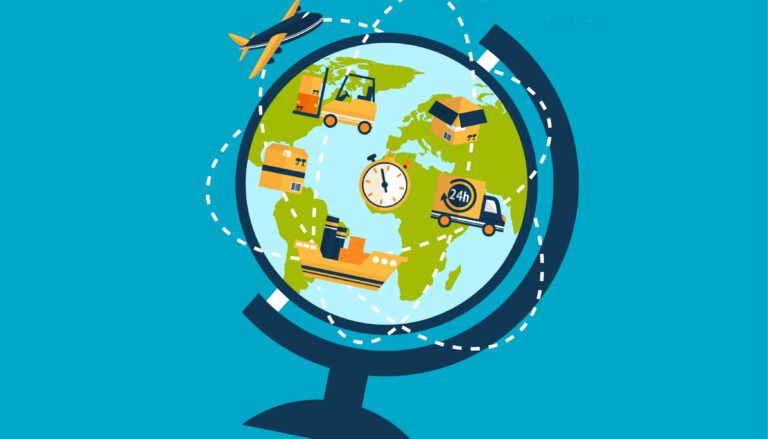9th April, 2024
What Is Digital Supply Chain in Construction & Why It Matters
Learn about digital supply chain management in construction, using insights from contractors, site managers, and procurement officers alike.
The construction industry, known for its robust structures and sky-high achievements, often grapples with an unseen issue at its own foundation: the supply chain. With a complex network that could make even the best procurement officer’s head spin, it’s no surprise the industry is on a constant quest for innovation and efficiency. The pursuit has led to the spotlight of a logical, crucial solution: you guess, it’s digital. Yet many seasoned professionals still find themselves caught in a lingering mystery—what is digital supply chain management, and does it really help?
This article uncovers why digitisation in supply chain management isn’t just a fleeting trend but a transformative force reshaping the construction landscape.
The Unexpected Challenge at Hand
Despite all its strengths, the construction industry has been flagged for its productivity gap. Believe it or not, as disclosed in the McKinsey Global Institute report, a staggering $1.6 trillion is left on the table each year. It’s a figure that can’t be ignored, especially when every penny counts.
Source: Office for National Statistics, Productivity in 50 years of legacy systems
The roots of this gap are often traced back to how supply chains are managed. With complex webs of suppliers, subcontractors, and logistics to juggle, it’s no wonder that procurement teams are struggling to keep up.
YardLink’s report from last year shows that 31% of senior procurement decision makers in UK construction firms stated a lack of digital tools and innovation as the biggest challenge they face.
A Digital Response
Enter digital supply chain management, which leverages technology to streamline processes, reduce waste, and ultimately close the productivity gap.
It can be a bumpy road, yet the rewards are undeniable. But first things first…
What Is Digital Supply Chain Management?
In essence, it’s the application of digital technologies that helps you improve the flow of information and finances across the supply chain. We talk here about everything from automated procurement platforms to real-time tracking systems, bringing a whole new efficiency level to the traditionally slow-to-adapt construction industry.
If you’re still wondering how digitisation drives supply chain efficiency, imagine trimming its regular costs to up to 44% of your project’s budget. That’s not just change; it’s transformation.
Understanding the Digital Supply Chain: A Personal Angle
Witnessing the digital shift in the construction industry today feels like standing at the edge of a new frontier. It’s a point in time where tradition meets innovation at such a speed that the outcome dramatically shifts the landscape of how we build.
But why should you care?
Because you’re in the thick of it every day: managing a construction project with the pressure of deadlines, budgets, and the constant juggle of suppliers and materials. It’s a balancing act, where one slip can cause delays and push costs through the roof.
Now, imagine if you had a tool that could take a lot of that weight off your shoulders: That’s what digital transformation in supply chain management does for you.
Source: YardLink
Sourcing equipment and materials can involve a lot of phone calls, paperwork, and spreadsheets that are hard to keep track of, and can accumulate high, unnecessary costs. In contrast, with digital supply chain management, you move the extensive paperwork online and streamline the procurement process. You can reach out to an extensive supply chain network, compare quotes and order equipment—all at the click of a button. Once your order is placed, you can keep track of what equipment you have across all sites from any supplier. No more guesswork or frantic last-minute orders.
Overordering just because you’re not sure what you have? That’s money wasted. Delays because something didn’t arrive when it was supposed to? That’s your schedule thrown off. Digital tools help you avoid these pitfalls by giving accurate information, improved visability and much more.
And we haven’t even reached the question of scale. Whether you’re working on a small local project or overseeing a massive development, digital supply chain management scales to fit. It’s flexible enough to meet the needs of any project size and adapt to the complexities and challenges you face.
In short, it isn’t just about making your life easier (though it definitely does). It’s how digitisation drives supply chain efficiency, saves money, and keeps your project on track.
Bringing Theory to Practice
Let’s ground this conversation with a look at what’s happening here in the UK. Many SME construction companies, possibly much like yours, are pioneering the changes, shedding the weight of legacy systems.
Until recently, managing supply chains was a nightmare of spreadsheets and guesswork. YardLink’s research has shown that a whopping 65% of firms still use basic spreadsheets or even pen and paper to keep track of their supply chain.
In addition, contractors reach out to an average of 11 different suppliers for each enquiry before finding one that meets all their requirements. According to our research and anecdotal evidence from senior procurement managers in the industry, each PO costs an average of £65 to raise—without including overhead and equipment costs. That’s an astonishing sum compared to other sectors, where the price reported by the Chartered Institute of Procurement and Supply is typically £50.
Source: YardLink
By adopting a digital tool that integrates with your existing systems, you gain the ability to free up time, improve efficiency, reduce costs, and centralise your supply chain. The result? A dramatic reduction in delays and cost overruns, making projects more profitable and less stressful.
Here are the key benefits of the digital supply chain shortlisted:
1. Reduced time spent sourcing equipment & suppliers: Because the tech does the hard work for you.
2. Increased visibility of inventory on-site: It helps keep a close eye on equipment usage and be aware of incoming deliveries and collections.
3. Ability to move the important paper trial online: Better organisation, including proof of delivery, proof of collection, waste transfer notes, invoices, and more.
4. No more overspending and spiralling budgets: Reduce the number of invoices in query and associated penalties.
So, how do marketplaces such as YardLink support a project?
We’ll use a hypothetical illustration to put the theory into perspective: a Heathrow Airport expansion.
A project of this scope would require extensive coordination of materials, labour, and logistics, thus offering an ideal scenario to explore how digitisation drives supply chain efficiency. It also demonstrates its benefits for large-scale construction projects in the UK.
Project Overview
The Heathrow expansion project would encompass the construction of a new terminal and at least one runway. That means facing immense logistical conundrums, from managing thousands of deliveries to coordinating a vast network of subcontractors. The project’s success, therefore, hinges on meticulous supply chain management to avoid delays and cost overruns.
Digital Transformation Strategy
The project team implements a digital supply chain management system to tackle these challenges. This platform enables procurement managers to handle orders from all suppliers in one place, avoiding the complexity of managing multiple supplier portals. What’s better, it simplifies the entire workflow from sourcing equipment to invoicing, making order management much more straightforward.
Key Features and Outcomes
Source: YardLink
Streamlined Procurement
The system streamlines the ordering by providing access to the UK’s largest digital supply chain network. In the context of our hypothetical project, YardLink sends the manager’s quote requests to their network of over 900 suppliers, exceeding the average manual capacity by far. The requests are then matched with the nearest suitable supplier, minimising delivery fees and, subsequently, the overall costs.
Supplier Collaboration Simplified
A digital platform helps avoid the issues induced by miscommunication with suppliers and subcontractors. The project managers see whom they are cooperating with, but YardLink manages the contract and handles the communication. YardLink takes that workload off the managers’ backs and helps to resolve any possible issues, such as delivery delays.
Environmental Effect
The digital chain system improves the project’s environmental impact by allowing sourcing from the closest available suppliers. Optimised logistics to reduce emissions and the project’s gross carbon footprint.
Overall Impact
In the case at hand, YardLink’s digital supply management improved the project’s efficiency and sustainability. In return, the team could easily meet critical milestones while staying within budget. Clear communication and rationalised collaboration across the supply chain also fostered a more cohesive project environment, leading to higher-quality outcomes.
Navigating the Digital Transformation Step by Step
Now, you might be thinking, “This all sounds great, but where do I start?” The journey to digitising your supply chain doesn’t have to be a leap into the unknown. Here’s how you can make this transition manageable and tailored to your company’s unique needs:
- Audit Your Current Processes
Start by understanding your existing supply chain process. Identify pain points and areas where inefficiencies are most pronounced.
- Set Clear Objectives
Define what success looks like for your digital transformation. Is it reducing project delays, cutting costs, or improving material tracking? Having clear goals will guide your technology choices.
- Start Small and Scale
You don’t need to overhaul your entire system overnight. Begin with one aspect, such as digital procurement or inventory management. Once you’ve seen the benefits, you can expand to other areas.
- Invest in Training
Any digital tool is only as good as the people using it. Ensure your team is trained and comfortable with new technologies. This not only smooths the transition but also empowers your staff to make the most of these tools.
- Choose the Right Partners
Not all digital solutions are created equal. Look for partners who understand the construction industry and can offer scalable solutions that grow with your business.
- Use a Local Supply Chain
On average, construction supplies are delivered to sites over 60 miles away. Switching to local suppliers speeds up deliveries and cuts costs, supporting local economies and reducing carbon emissions.
AI and Machine Learning: The Next Frontier
While integrating digital tools for inventory or procurement might seem like a leap, the horizon holds even more promise. Artificial Intelligence (AI) and machine learning have already started revolutionising the digital supply chain further. That means that soon, the systems will not only track your material needs but also be able to predict them based on project phases, historical data, and even weather conditions. Until recently, this was a domain of science fiction; now, it’s the direction we’re headed.
Source: Office for National Statistics, investment in research and development
The Road Ahead: A Call to Action
It is clear by now that the digital supply chain in construction is the future. A future that navigates the path beyond enhanced efficiency and reduced costs toward a new way of building: lean, agile, and sustainable. For someone who makes the tough calls, embracing this digital shift isn’t just about staying competitive; it’s about leading the charge toward a more innovative, efficient, and profitable construction industry.
So, why make the switch? Because, in essence, embracing digital supply chain management is a logical step forward. It’s about equipping yourself with the tools you need to tackle the challenges of modern construction management head-on. If you’re ready to reduce waste, save time, and keep your projects running smoothly, it’s time to consider digitalising your supply chain.
YOU MIGHT ALSO BE INTERESTED IN

